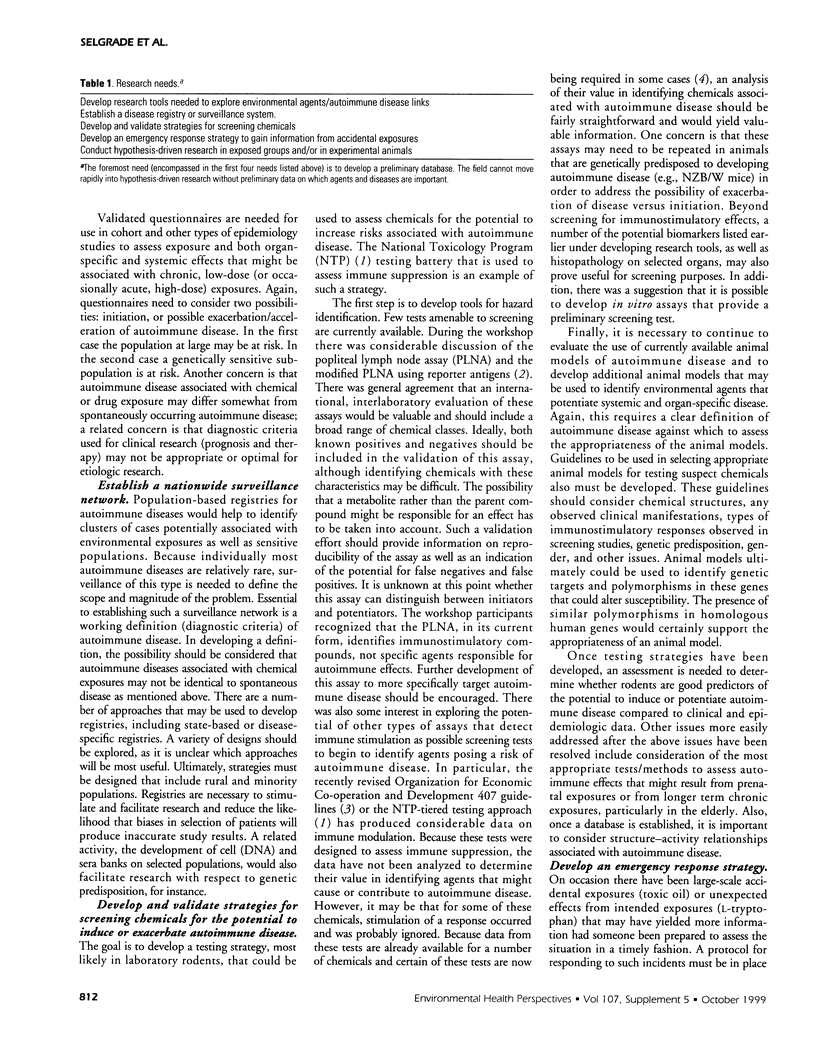Abstract
Autoimmune diseases are influenced by multiple factors including genetics, age, gender, reproductive status, hormones, and potential environmental contaminants. A workshop, "Linking Environmental Agents and Autoimmune Diseases," was convened at the National Institute of Environmental Health Sciences, Research Triangle Park, North Carolina, 1-3 September 1998, to review current knowledge about links between environmental exposures and autoimmune disease, to identify and prioritize research needs, and to develop an integrated, multidisciplinary research agenda. Participants spent the last half-day of the workshop in small group discussions for the purpose of developing consensus on research needs. Research needs identified were a) develop research tools needed to explore links between environmental agents and autoimmune disease; b) establish a disease registry or surveillance system; c) develop and validate strategies for screening chemicals for the potential to induce or exacerbate autoimmune disease; d) develop an emergency response strategy to gain information from accidental exposures; and e) conduct hypothesis-driven research in occupationally exposed groups and/or in experimental animals. There was consensus that meetings like this workshop and projects that facilitate interactions between specialties should be encouraged. A multidisciplinary approach is needed to address this problem.
Full text
PDF


Selected References
These references are in PubMed. This may not be the complete list of references from this article.
- Davis G. S., Leslie K. O., Hemenway D. R. Silicosis in mice: effects of dose, time, and genetic strain. J Environ Pathol Toxicol Oncol. 1998;17(2):81–97. [PubMed] [Google Scholar]
- Khan M. F., Kaphalia B. S., Prabhakar B. S., Kanz M. F., Ansari G. A. Trichloroethene-induced autoimmune response in female MRL +/+ mice. Toxicol Appl Pharmacol. 1995 Sep;134(1):155–160. doi: 10.1006/taap.1995.1179. [DOI] [PubMed] [Google Scholar]
- Luster M. I., Munson A. E., Thomas P. T., Holsapple M. P., Fenters J. D., White K. L., Jr, Lauer L. D., Germolec D. R., Rosenthal G. J., Dean J. H. Development of a testing battery to assess chemical-induced immunotoxicity: National Toxicology Program's guidelines for immunotoxicity evaluation in mice. Fundam Appl Toxicol. 1988 Jan;10(1):2–19. doi: 10.1016/0272-0590(88)90247-3. [DOI] [PubMed] [Google Scholar]
- Parks C. G., Conrad K., Cooper G. S. Occupational exposure to crystalline silica and autoimmune disease. Environ Health Perspect. 1999 Oct;107 (Suppl 5):793–802. doi: 10.1289/ehp.99107s5793. [DOI] [PMC free article] [PubMed] [Google Scholar]
- Pieters R., Albers R. Screening tests for autoimmune-related immunotoxicity. Environ Health Perspect. 1999 Oct;107 (Suppl 5):673–677. doi: 10.1289/ehp.99107s5673. [DOI] [PMC free article] [PubMed] [Google Scholar]
- Rose N. R., Rasooly L., Saboori A. M., Burek C. L. Linking iodine with autoimmune thyroiditis. Environ Health Perspect. 1999 Oct;107 (Suppl 5):749–752. doi: 10.1289/ehp.99107s5749. [DOI] [PMC free article] [PubMed] [Google Scholar]


